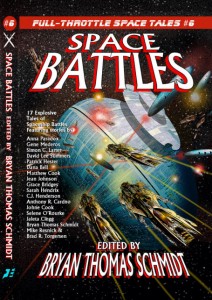TITLE: The Hitherto Secret Experiments of Marie Curie
EDITORS: Bryan Thomas Schmidt and Henry Herz
350 pages, Blackstone Publishing, ISBN 9781665047036 (hardcover, also e-book and audio)
MY RATING: 5 stars out of 5
SHORT REVIEW: An excellent collection of stories that consider what might have happened had Marya Skłodowska (who grew up to be Marie Curie) used her scientific knowledge to combat threats to her family and friends. While most of the stories feature a supernatural threat, a few are more standard mysteries. The tales are grounded in the truths of Marya’s childhood: the early deaths of her mother and elder sister, the Russian occupation of Warsaw, and the lack of public education for girls. Many of the stories are followed by author’s notes explaining the science Marya uses to solve problems and help her friends, which I hope will add to the editors’ intent of inspiring children, especially girls, to go into STEM fields.
LONGER REVIEW: The Hitherto Secret Experiments of Marie Curie posits a world in which the teenage Marie Curie, née Skłodowska, uses her scientific knowledge to protect family and friends from threats ranging from murderers to the supernatural. While a few of the stories stray from the concept (either by not including a science-based solution to the problem, or by having the title character do something downright villainous), most fit the bill.
Marya Skłodowska grew up in Warsaw, which was then under Russian dominion. Girls were only allowed to attend school to a certain age, and Poles were treated by the Russians as second-class citizens in their own city. When laboratory instruction in the sciences was removed from the curricula for Polish students, Marya and some of her peers attended a “flying university” that changed locations to avoid Russian detection. Most of the stories take place during the time Marya and her friends were students at a regular “gymnasia” (school) for Polish girls, but a few take place during the “flying university” years, and at least one during the year Marya spent living with relatives in the Polish countryside. Only one (“The Beast” by Stacia Deutsch) features an adult Marie Curie and is a neat twist on the typical time-travel story.
The volume opens with “Uncrowned Kings” by Seanan McGuire, who herself knows more than just a little bit about using hard science in science fiction and horror. After the death of her eldest sister by typhus, Marya stops believing in God and starts trusting in science. When something that seems like typhus rears its ugly head six years later but only affecting children and teens including another of her sisters, Marya follows the evidence to find the true source of this latest scourge: a mythical rat-king in the sewers. McGuire’s tale sets the tone of the book perfectly: showcasing Marya’s determination to not let others fall victim to preventable disease, her curiosity about the scientific underpinnings of the universe, her devotion to family and friends, all ensconced in a story that includes some fantastical element. “The Cold White Ones” by Susanne L. Lambdin also uses the return of typhus to Warsaw as a launching point but with a different supernatural problem at the core.
Marya’s grief and anger over the untimely deaths of her mother and eldest sister, Zofia, are palpable in many of the stories, not just McGuire’s. Sometimes the emotions spur the action, sometimes the action helps Marya process her grief – I’m thinking particularly here of Alethea Kontis’ beautiful “Marya’s Monster,” in which Marya returns from a St. Andrew’s Day birthday party to encounter a wolf-like monster under her bed. I don’t want to say too much more about how the story progresses, except that it is a stunning look at how we process grief and loss.
Other favorites in the anthology that feature a supernatural menace of some sort as Mylo Cabria’s “Three Ravens,” Scott Sigler’s “A Glow in the Dark,” and Jonathan Maberry’s “The Night Flyers,” which closes on the book on as solid a note as McGuire’s story opened it, focusing as it does on the other bane of Marya’s existence: the Russian overlords controlling Warsaw. The story is especially affecting as in 2023 we watch Russia’s continued war on Ukraine.
Not every story features a supernatural element. In “The Magic of Science,” co-editor Bryan Thomas Schmidt teams with author G.P. Charles to give us a wonderful “cozy mystery:” a girl in Marya’s dorm wakes up to discover her skin has turned blue. Later that day, a cook at the school dies. Supernatural explanations are put forward by her fellow students, but Marya is sure there is a rational scientific explanation. There is, and the path to it is well-developed, a very “fair play” kind of mystery. Steve Pantazis’ “The Prize” also seems to lack, or at least downplays, a supernatural element, pitting Marya and a rival classmate against the impending death of the classmate’s father by metal poisoning.
Many of the stories are followed with an explanation of the science that underpins the story, which I think enhances the book’s ability to interest young readers in the sciences and encourage them, especially young girls, to pursue STEM studies.
I received an electronic advance review copy of this book for free from the publisher via NetGalley in exchange for an honest review. This does not affect my opinion of the book or the content of my review. The Hitherto Secret Experiments of Marie Curie was published on April 11, 2023.










